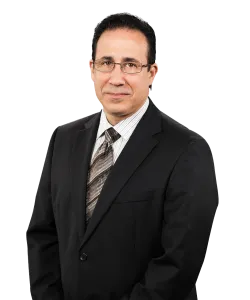Take Me For a Test Drive: Auto Dealers and Hand Controls – How Much Accommodation is Too Much Accommodation?
In Karczewski v. DCH Mission Valley, the Ninth Circuit Court of Appeals overturned the district court’s dismissal of an American with Disabilities Act (ADA) Title III claim regarding the availability of temporary hand controls in vehicles for test drives.
This was one of many related cases by the same law firm against local car dealers for lack of available hand controls. Those cases include Karczewski v. K Motors, Inc., 14-cv-2701, Karczewski v. DCH Mission Valley, LLC, 14-cv-2639, Karczewski v. Conant Auto Retail, San Diego, Inc., 14-cv-2615, Schutza v. RNL Automotive, LLC, 15-cv-01405, Schutza v. Courtesy Chevrolet Center, 14-cv-2576, and Schutza v. FRN of San Diego, 14-cv-2628, all pending in the US District Court for the Southern District of California.
In this case, Plaintiff John Karczewski, a paraplegic from the waist down, visited DCH Mission Valley and asked them to install temporary hand controls to test drive a vehicle. The Complaint alleged the dealer was unwilling to comply. Plaintiff brought an action under 42 U.S.C. § 12182(b)(2)(A)(ii) which requires a public accommodation to “make reasonable modifications in policies, practices, or procedures, when such modifications are necessary to afford … goods, services, facilities, privileges, advantages, or accommodations to individuals with disabilities” and under § 12182(b)(2)(A)(iv) which required the removal of architectural barriers in existing facilities where readily achievable. The Ninth Circuit reversed the district court’s motion to dismiss the reasonable accommodation allegation, finding that, at the pleading stage where the allegations must be taken as true, Plaintiff has stated a valid claim.
The Ninth Circuit cautioned that the requested accommodation “ultimately may prove to be unreasonable,” as Defendant argued the difficulties in meeting such an accommodation, such as the need to purchase hand controls, create a training program, develop a protocol to evaluate a customer’s needs and procedures to determine whether each vehicle can be equipped, and have trained employees available during all business hours capable of installing and uninstalling the devices. The Ninth Circuit was careful to point out that Defendant’s assertions “may ultimately carry the day, perhaps even at summary judgment,” as what is reasonable is a fact-specific and case-by-case inquiry. The Court ultimately determined that, at least at the pleading stage, the proposed modification to add temporary hand controls to allow for test drives appears reasonable and Plaintiff therefore stated a valid claim that he was discriminated based on failure to make the requested reasonable modification.
As for Plaintiff’s other claim regarding architectural barriers, the Ninth Circuit left undisturbed the district court’s dismissal as the installation of temporary hand controls is not considered an architectural barrier to a facility. The Court compared the use of “facilities” in § 12182(b)(2)(A)(iv) to the insertion of “goods,” “services” and “facilities” in other sections such as § 12182(a) and others. The Court reasoned that the “barrier” Plaintiff encountered “cannot reasonably be described as an architectural barrier in an existing facility,” thus would stretch the ordinary meaning of facilities too far. It conflicts with Congress’ choice to limit the reach of “architectural barriers” only to “facilities.” The Ninth Circuit was unpersuaded by Defendant’s argument that even if Plaintiff has a viable claim, that the implementing regulations, 28 C.F.R. §§ 36.307(a) (public accommodation does not require alteration to inventory to include accessible or special goods) and 36.306 (public accommodation does not require the provision of personal devices) preclude the claims. The Ninth Court articulated that “inventory” comprised the inventory as a whole and not each individual item (such as a vehicle). And that categorizing temporary hand controls as “personal devices” would conflict with other regulations, as many establishments are required to provide certain types of devices, such as “audio description devices” in movie theaters. The Court’s interpretation of § 36.306 allows it to be read in harmony with § 36.303 and other statutes, and neither § 36.307(a) nor 36.306 are barriers to Plaintiff’s claim. The Ninth Circuit partially reversed and remanded the case. Whether the case will survive a potential summary judgment after the case is at issue, remains to be seen.
Procedurally, after the Ninth Circuit’s decision, all of these cases were remanded to the district court and most of the defendants have filed Answers or are in the process of doing so. Defendants are initiating expert discovery regarding the feasibility of the requested accommodations in an effort to build support and evidence for a motion for summary judgment.
Contacts
- Related Industries

